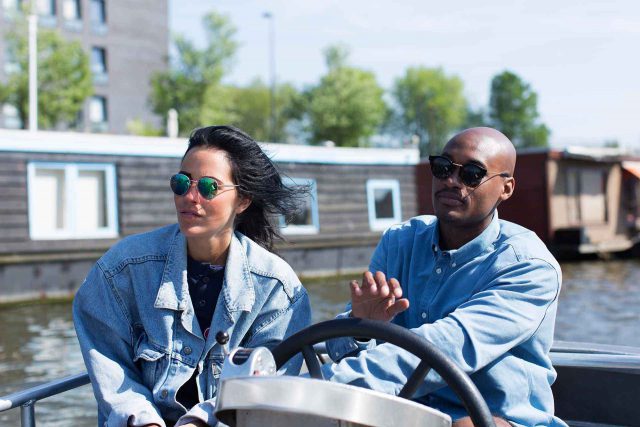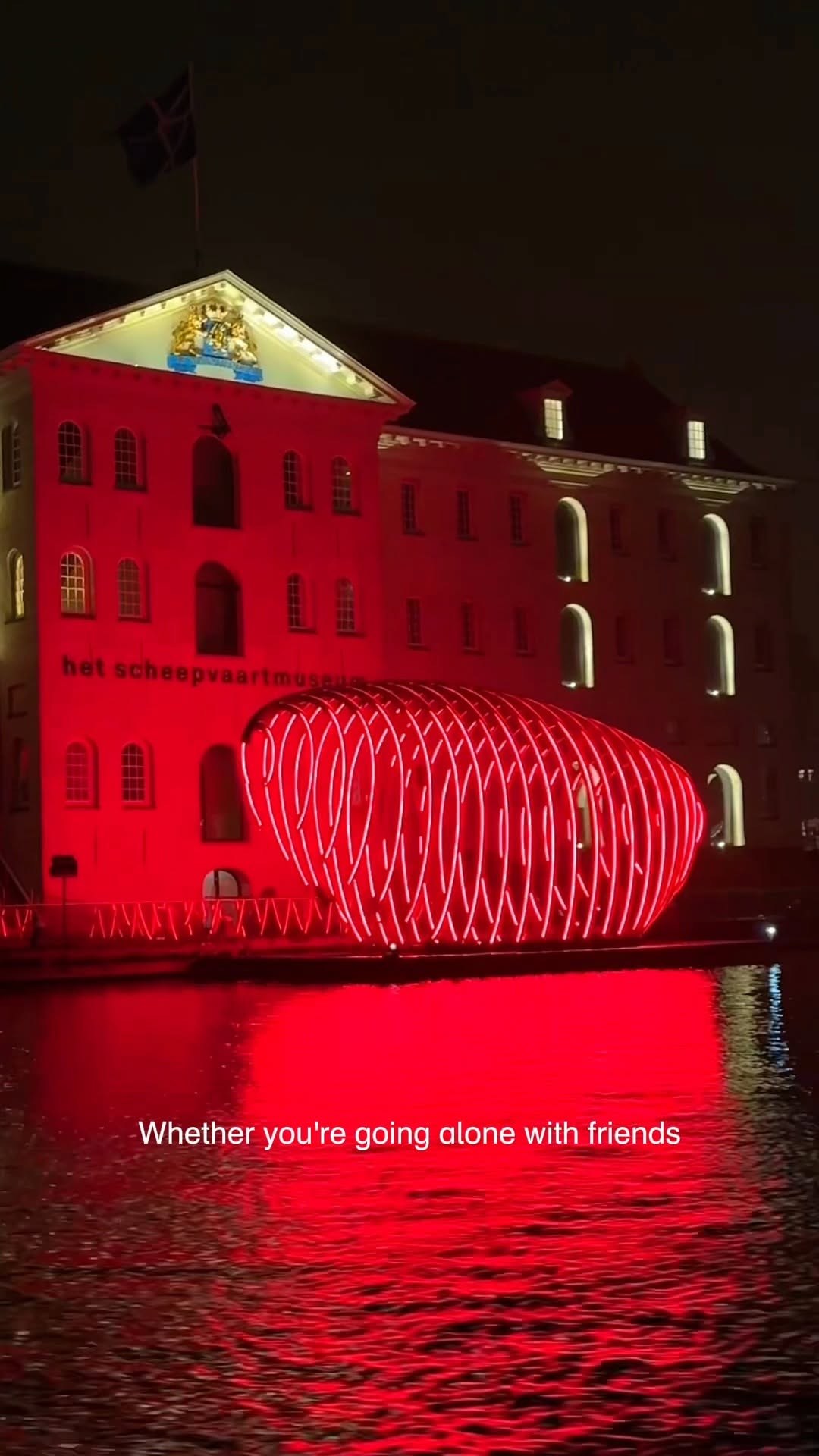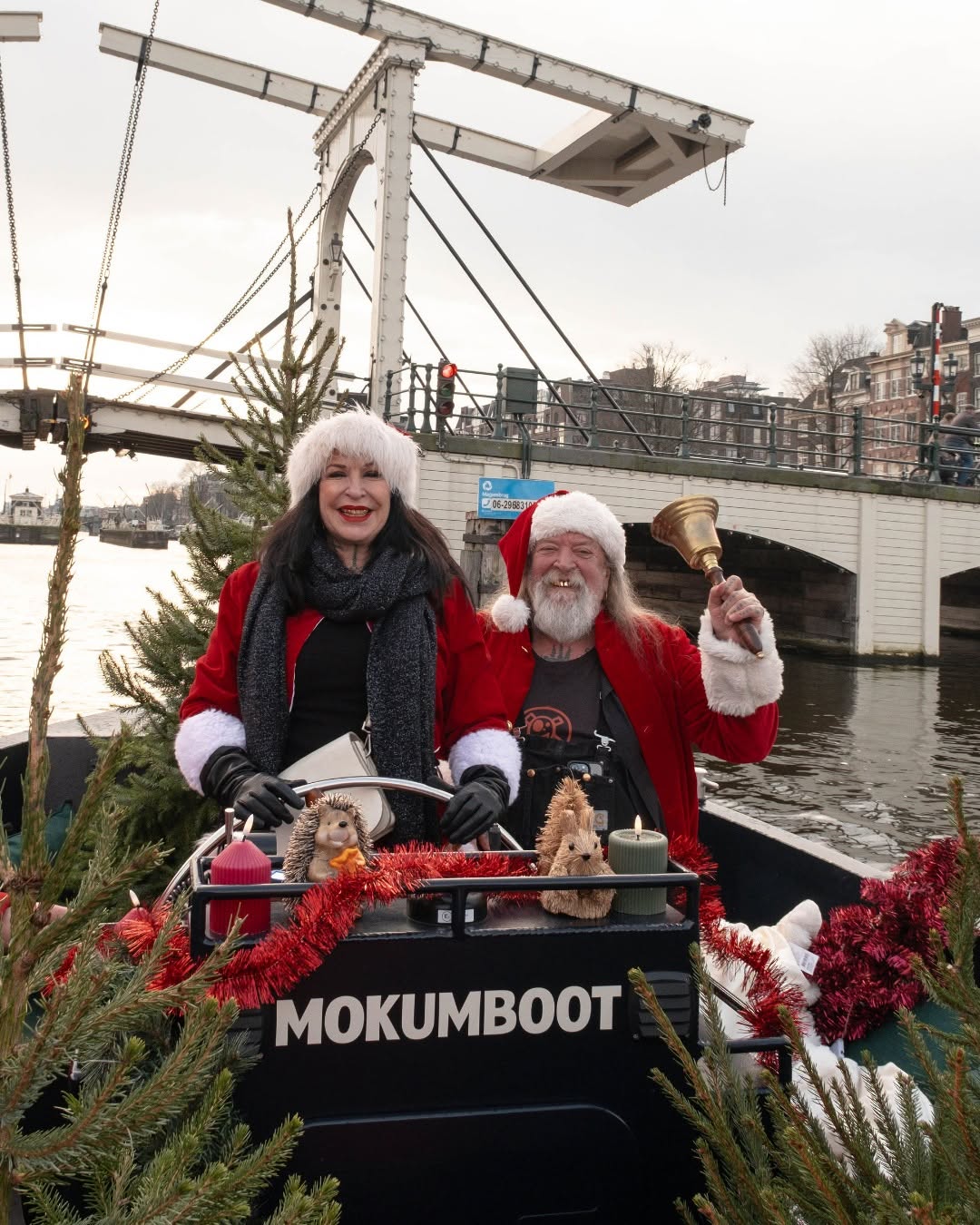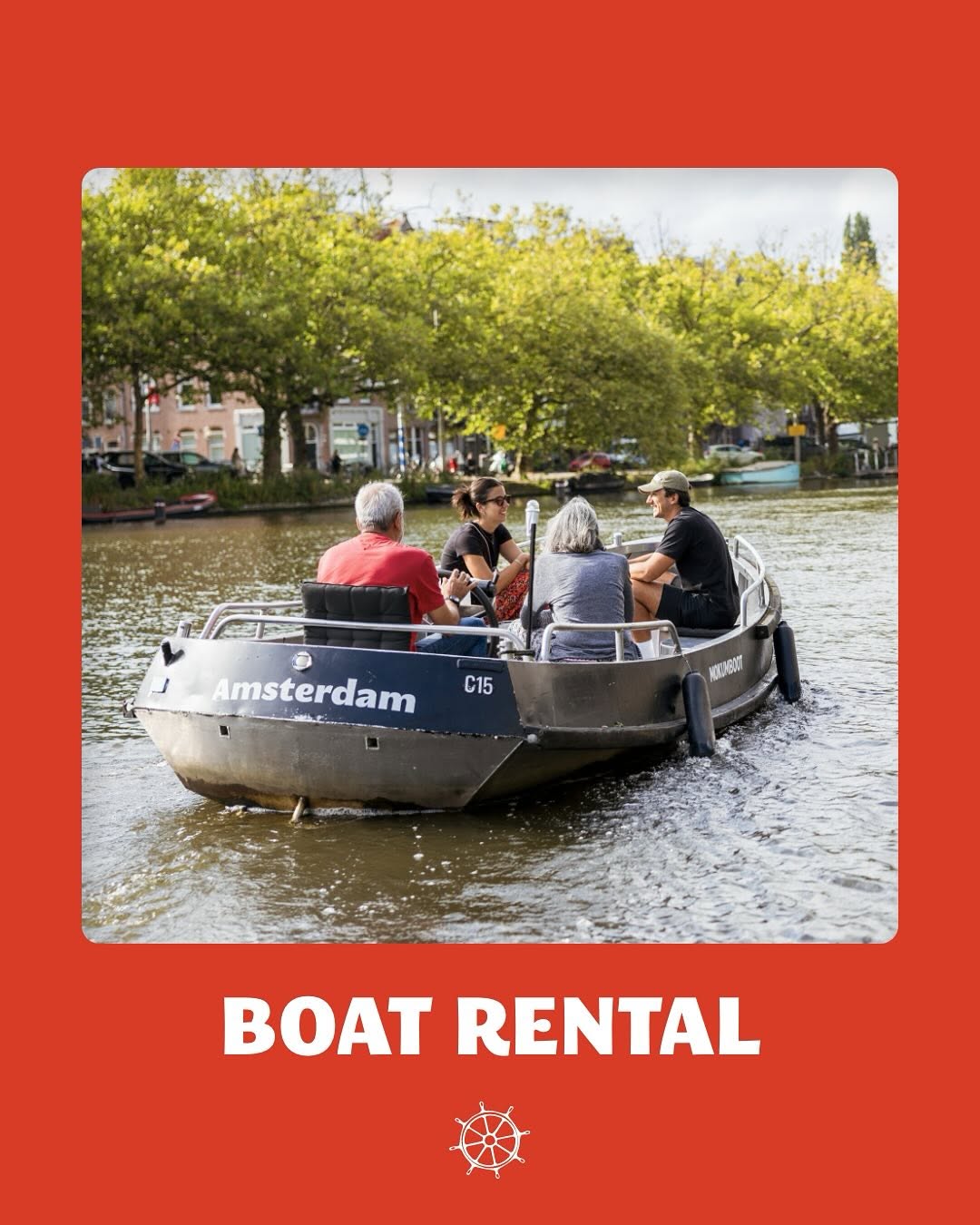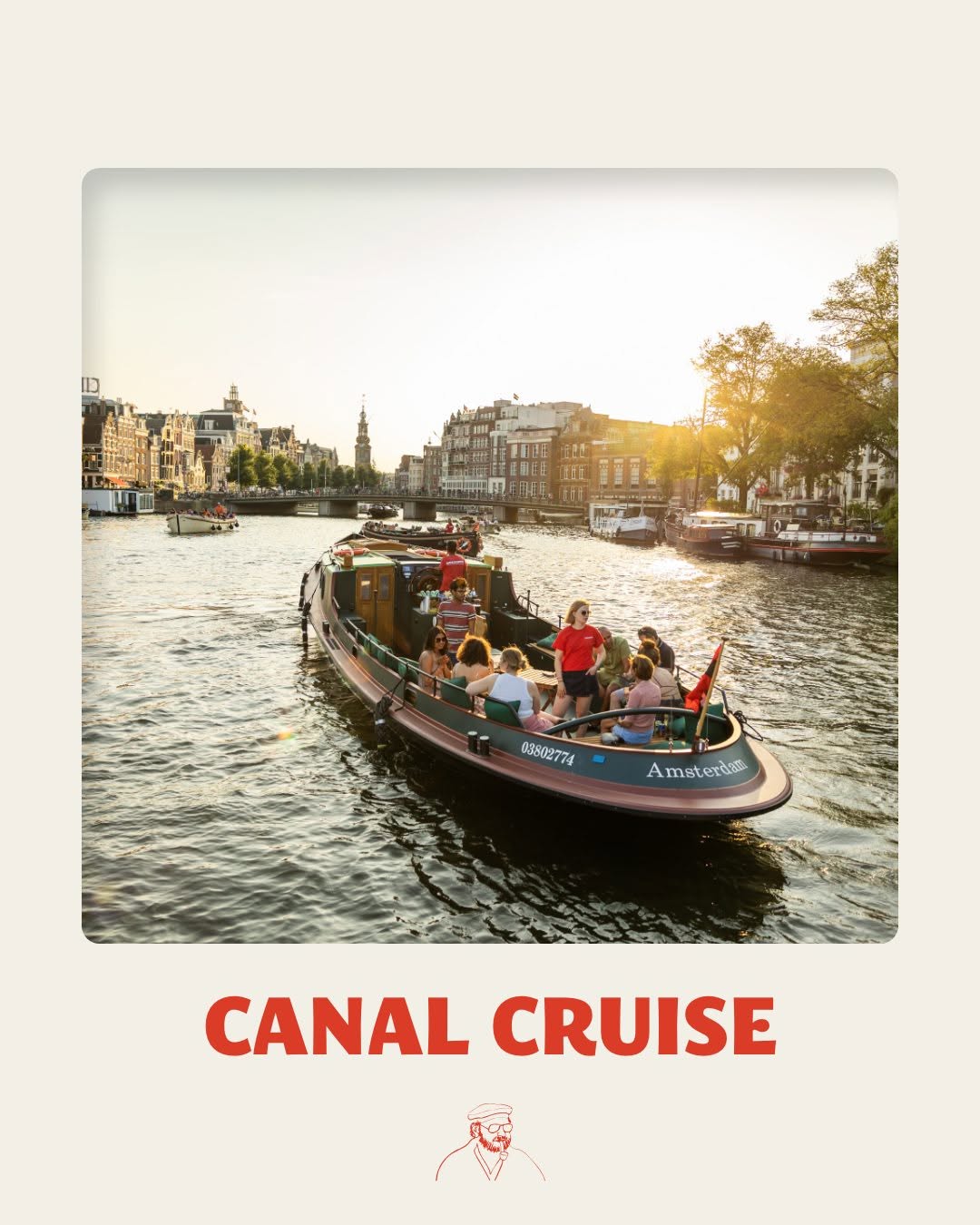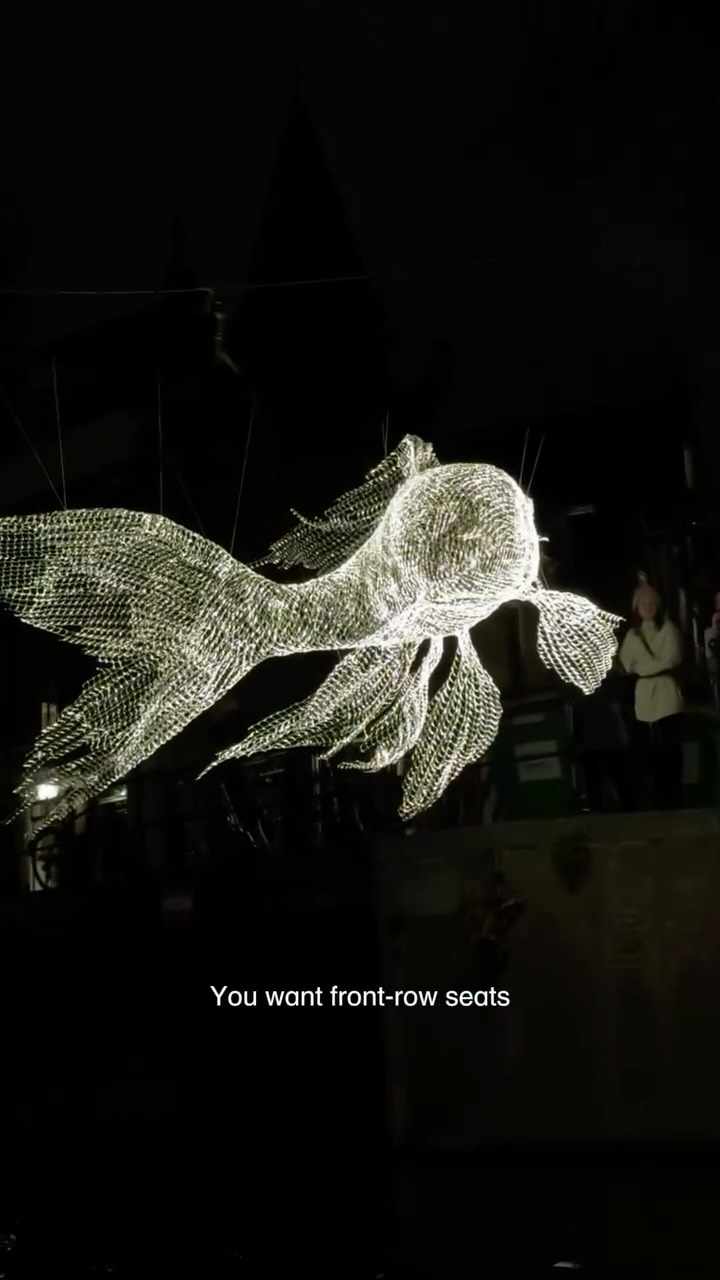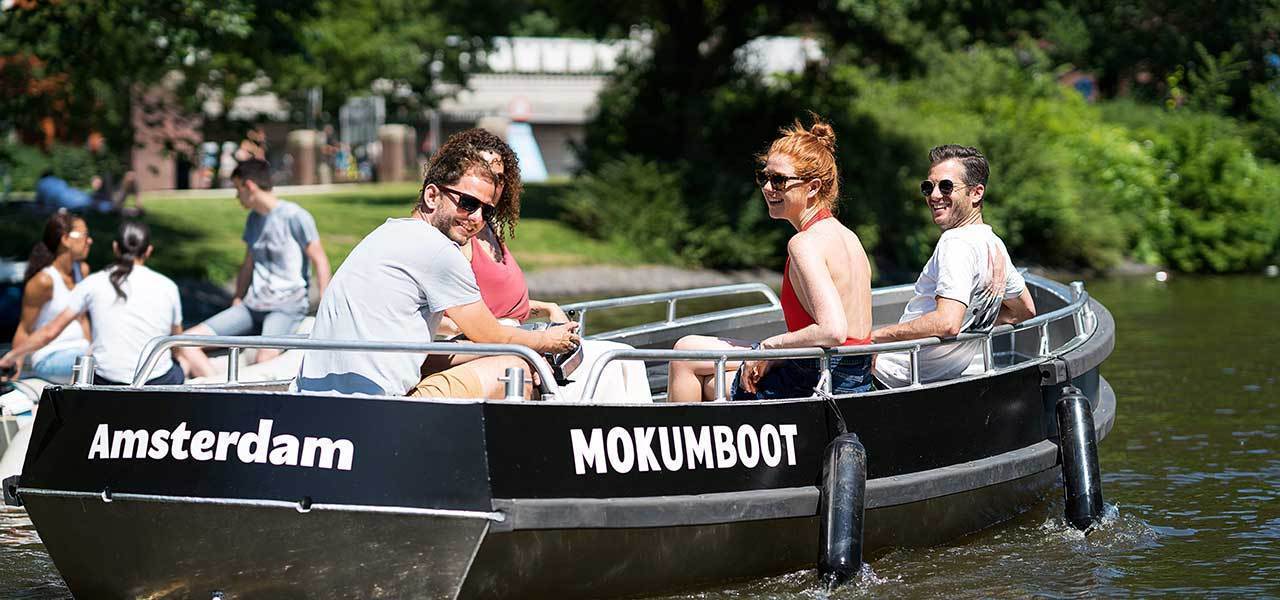
Rent a boat
Sail yourself through Amsterdam, starting from €120,- for 3 hours
Canal route: 3 hours
Amsterdam is known for its many canals. The waters of the canal belt that demarcate the city center are the best known: the Singel, the Herengracht, the Keizersgracht and the Prinsengracht. On the shore you will find the architecture of the Golden Age: narrow, high buildings with stepped gables and traditional ornaments. Discover this beautiful piece of Amsterdam history while sailing one of the many canal routes. Since 2010, the Amsterdam canal belt has been on the World Heritage List thanks to the unique and irreplaceable character of the canals. You can easily rent a boat at Mokumboot.
Download our sailing map
The 3-hour canal route is a combination of the blue and orange routes on our sailing map. Anyone who rents a boat from Mokumboot will also receive this sailing card prior to his or her trip. Would you like more information about this route? Then read on below. We would like to give you a short impression of this beautiful route:

Cafe Waterkant
For this route, for convenience, we start from our Center location at Nassaukade 351. The cruise starts in a northwesterly direction past the always cozy De Waterkant cafe. Immediately after the cafe, turn right. Sail until you can go no further and you will find yourself on the Prinsengracht. Turn right on Prinsengracht. NB! This canal is one-way traffic. The first stop is at Prinsengracht 436. The Palace of Justice.
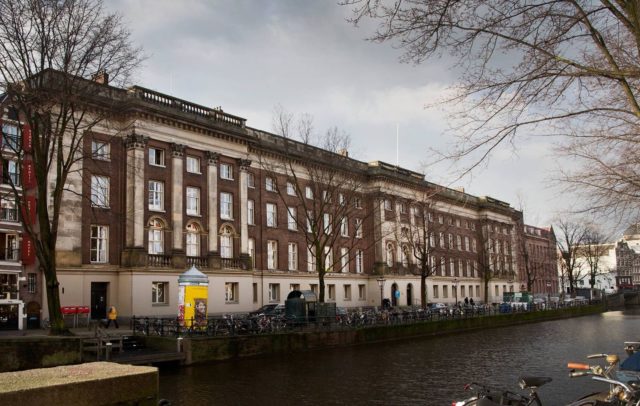
Palace of Justice
This building was a former orphanage and was converted into the Palace of Justice in 1825. The facade of the former orphanage has been completely renovated by the current facade, which is shaped according to classicism and has a cellar, brick center facades, heavy cornice, closed balustrade and three risalites, each reinforced with four colossal Corinthian pilasters. Since April 2013, the court has moved to the IJdok. Unfortunately, we do not have a permit to sail our boats on the IJ. On to the next stop!
Cruise all the way along the Prinsengracht until you reach the Amstel. Once on the Amstel, turn left. You can already see the next stop! Namely: the double drawbridge, called the Magere Brug.
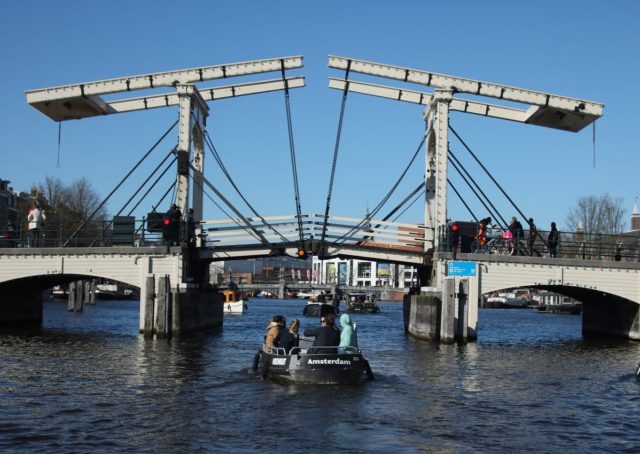
Magere Brug
The Magere Brug (Magere Brug in Dutch) is a double drawbridge over the Amstel river. This beautiful bridge has a rich history. Around 1691 it was the Kerkstraatbrug that connected both sides of the Amstel at this location with 13 passages. In 1871 this bridge was demolished and replaced by the current Magere Brug. Until 2003 it was possible to drive over this bridge by car, but nowadays it can only be used for cyclists and pedestrians to cross. After you have passed under the Skinny Bridge, turn into the next canal on your left, the Keizersgracht.
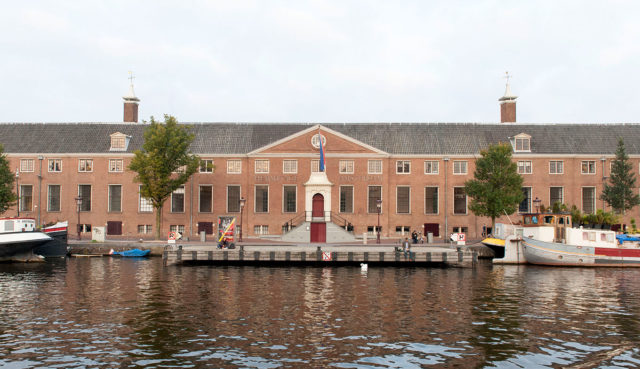
Hermitage Amsterdam
After you have passed under the skinny bridge, you will find the Hermitage Amsterdam on your right. The building serves as a space for various museum collections and art exhibitions. The Hermitage Amsterdam was built in 1681 in a monumental classical style and served as a nursing home until 1999. The building was renovated between 2007 and 2009 to serve as a museum. Today, this museum houses collections from the Amsterdam Museum and exhibitions from the Hermitage Museum in Saint Petersburg. After the Hermitage you sail quietly in the direction of Carré.
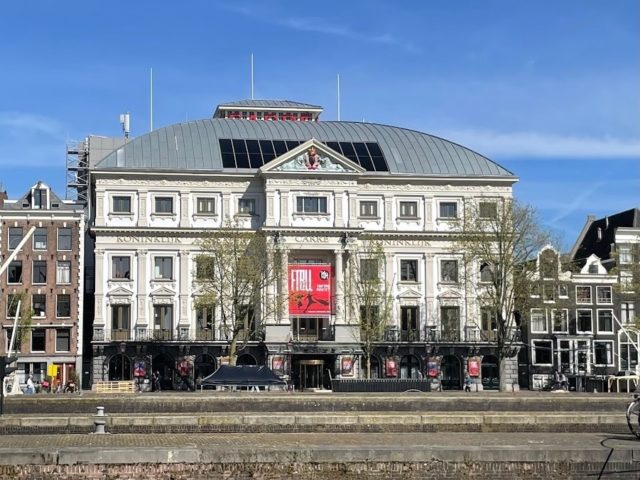
Carré
Here you will find the Royal Theater Carré, which opened on December 3, 1887. The classicist style of the building makes it a beautiful sight on the Amstel. The theater was originally built to house the circus of the same name “Oscar Carré”. However, from 1893 onwards, numerous successful variety performances were also performed, which put Carré on the map as a theater for all kinds of popular entertainment. Nowadays Carré mainly hosts musicals, pop concerts, musical theater and cabaret performances. Continue your course, a little further on you will encounter the Stopera.
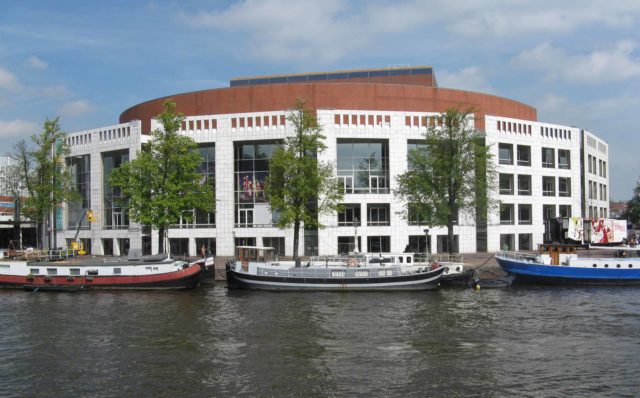
The Stopera
The Stopera building owes its name to the abbreviation of the protest slogan “Stop the Opera”. However, the theater itself never uses this name in communication, because it is a manifestation against construction. The building was opened on September 23, 1986 and serves to house the Opera and the Town Hall in one. Performances by the Dutch Opera and the National Ballet take place in the Stopera building. The Amstelhoeck café is also located on the corner of the Amstel and the Zwanenburgwal, where you can have a snack and drink with a great view.
Turn left here and sail along the Rokin and the Grimburgwal, towards the Oudezijds Voorburgwal.
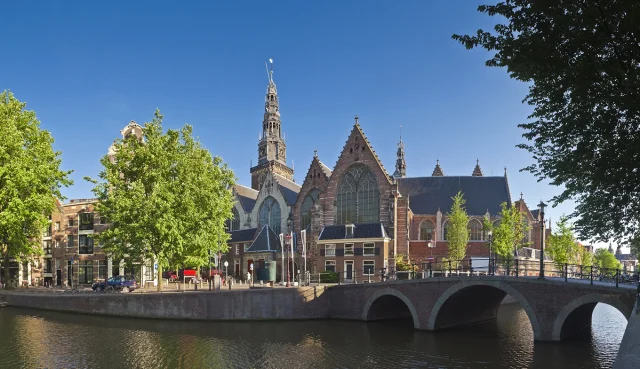
The Old Church
On your left you will find the Old Church (de Oude Kerk in Dutch) of Amsterdam. The Old Church is the oldest building in the city and was built in 1306! This church is also used for church services every Sunday, but also offers space for high-profile exhibitions, numerous activities, permanent archive presentations and wonderful concerts.
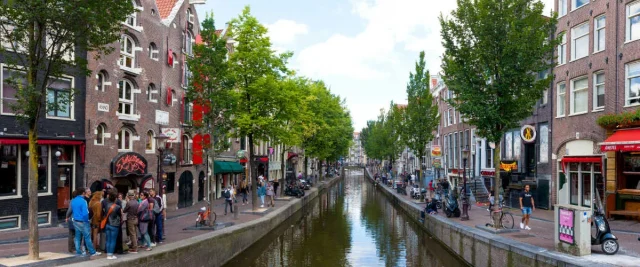
The Red light district
The Red Light District (de Wallen in Dutch) is located directly opposite the Oude Kerk. The Red Light District is a prostitution area located in the oldest part of Amsterdam. Within this area, window prostitution is practiced at more than 300 workplaces, but numerous sex shops are also located. At the end of the Oudezijds Voorburgwal is the Schreierstoren, our next stop.
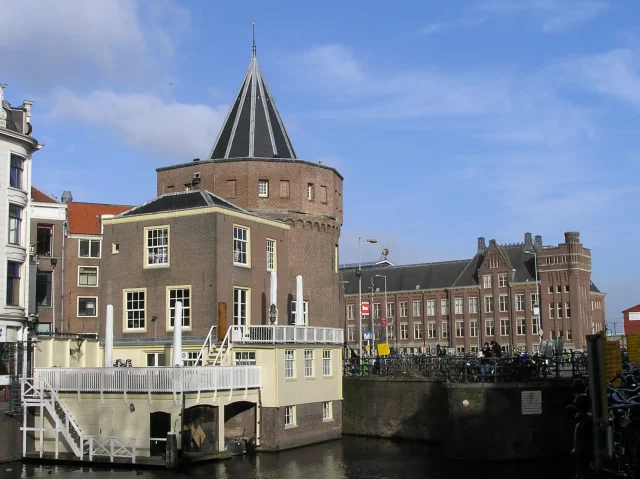
The Schreierstoren
The Schreierstoren is a defense tower that used to be part of the city wall of Amsterdam. The tower was built around 1487 on the corner of the IJ and the east side of the city, and is the only preserved defense tower in Amsterdam. The tower has now been converted into a café in a beautiful old style. Just after this tower you enter an open stretch of water, the Open Harbor Front.

The Oosterdok
Once you arrive at the Open Havenfront, turn right and sail towards the Oosterdok (Recht Boomsloot is closed at the time of writing, current information can be found on the municipality’s website) where you will find the NEMO science and technology museum. In the NEMO Science Museum, everyone, from young to old, discovers how fascinating science and technology are. On five floors full of exhibitions, experiments, demonstrations and workshops, visitors experience how special everyday things are. The building opened its doors to visitors in 1997 and is now an unmissable part of the Amsterdam skyline. From the Oosterdok you sail past the Montelbaanstoren.
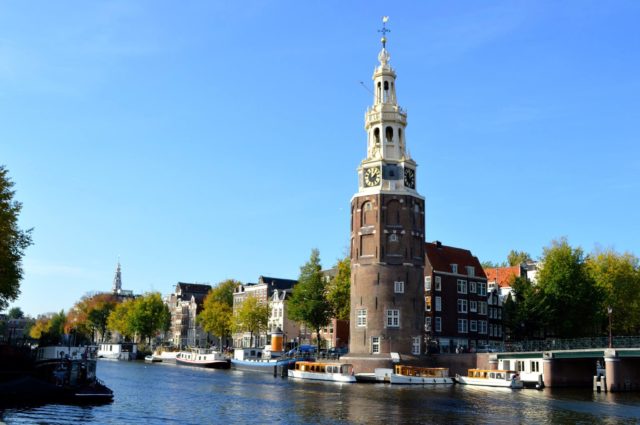
The Montelbaanstoren
The Montelbaanstoren is a 16th-century defense tower, once part of the city walls, with tower bells and a clock from 1606. Sail back towards the Amstel via the Oudeschans or Uilenburgergracht. Then sail back towards the Magere Brug and turn into the Keizersgracht on your right, just before the bridge.

Foam Museum Amsterdam
Sail about 500 meters up the Keizersgracht and you will find the Foam Museum Amsterdam on your right, an internationally renowned photography museum housed in an 18th-century canal house. The museum shows all facets of contemporary photography by world-famous photographers and emerging talent in constantly changing exhibitions. Foam shows a wide range of genres, ranging from historical photographs and art photography to street photography and fashion photography. Across the canal is the Van Loon Museum, the former home of the Van Loon regent family.
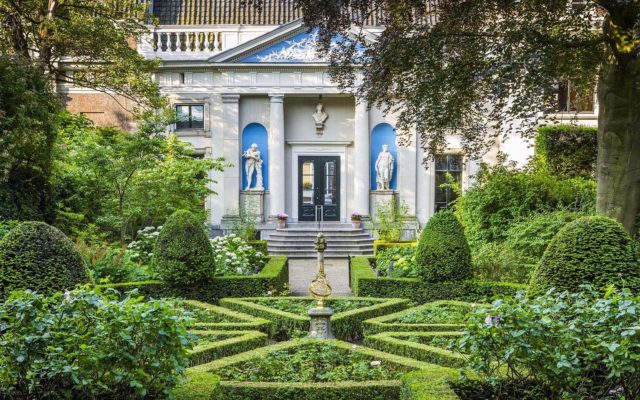
Van Loon Museum
The first resident of the former house was the painter Ferdinand Bol, a student of Rembrandt. The last residents of the house were the Van Loon family, who bought the house in 1884. Two centuries earlier, during the Golden Age, the family’s ancestor, Willem van Loon – one of the founders of the Dutch East India Company – lived here.
The interior of the house has remained largely intact over the centuries and still evokes the splendor of the 17th century. The rooms contain a large collection of paintings, beautiful furniture, precious silverware and porcelain from different centuries. Behind the house is a beautiful garden, an oasis of peace in the modern and busy city center.
Continue slowly down the Keizersgracht. The next stop, the 9 Streets, is less than a kilometer away.
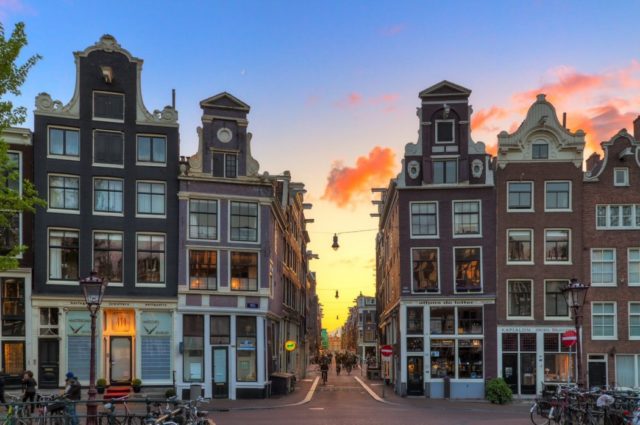
9 Streets
The Keizersgracht runs through the heart of the 9 Streets (9 Straatjes in Dutch) – a part of the Jordaan that consists of picturesque streets that connect the various canals and is filled with unique boutiques, stylish cafes and galleries. Hidden behind the Royal Palace on Dam Square, the area is popular with shoppers looking for specialty products and unique gifts.
De 9 Straatjes is the ideal neighborhood to get to know Amsterdam in all its diversity and richness. The neighborhood offers a nice overview of the architectural styles in the city. From the beginning, these 9 side streets were dominated by trade and culture. And it is still a lively neighborhood after 400 years.
Just after the shopping area you will find the next stop on the left, the Church of Our Lady.
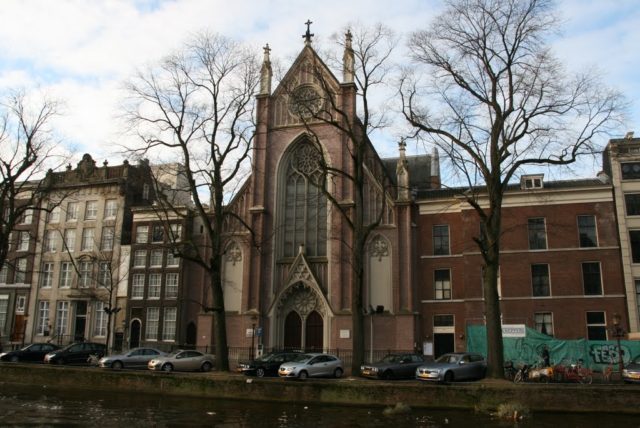
Church of Our Lady
The Church of Our Lady (Onze Lieve Vrouwekerk in Dutch), also called the Syrian Orthodox Church, was designed by Theo Molkenboer, the most important architect of Catholic churches in the Netherlands in the mid-19th century. It was the first church he ever designed based on the principles of classical Gothic.
The Roman Catholic community was the original community served by this church when it was built between 1852 and 1854, shortly after the ban on building Roman Catholic churches was lifted. When the number of Roman Catholics in Amsterdam decreased, the church was sold to the Syriac Orthodox Catholic community, which allowed other denominations to use the church, including the Surinamese Roman Catholic community and the general Roman Catholic community. 150 meters further on on your left is the Gay Monument.

Gay Monument
The Gay Monument in Amsterdam was the first of its kind in the world. The monument commemorates all gay men and women who died during World War II, as well as all LGBTI people who were or are being persecuted by governments. Almost immediately after the war, there were calls to erect a memorial, but it only really got off the ground in the 1980s. The monument was officially unveiled in September 1987.
The Homomonument consists of three pink granite triangles and together they form a larger triangle. The three points of the triangle are symbolic: one corner points to the National War Memorial on Dam Square; another points across the canal to the Anne Frank House; while the third corner points to COC Amsterdam. It remains the largest monument in the world dedicated to homosexuality and remembrance.
Cruise all the way out of the Keizersgracht until you can go no further and turn left twice onto the Prinsengracht. As soon as you enter the Prinsengracht you can see the Noorderkerk on your right.
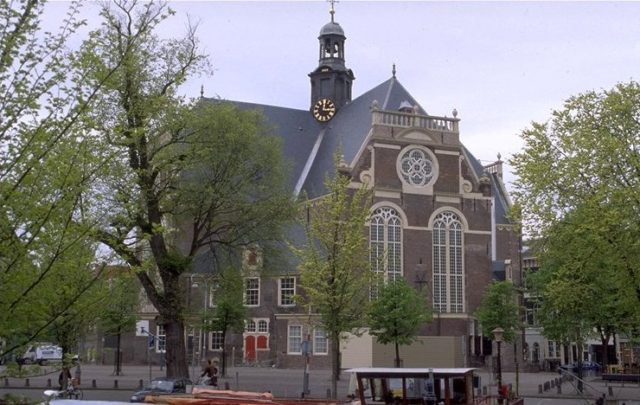
Noorderkerk
The church was built between 1620 and 1623 using the so-called central construction method, the church plan forms a Greek cross, and triangular service houses were built in the armpits. Following this example, the Nieuwe Kerk was built in Groningen and the Groote Kerk in Maassluis.
The Noorderkerk was restored between 1993 and 1998. During the restoration, largely paid for by the municipality of Amsterdam and the government, it was determined that the church should also be used for cultural activities. Concerts are given regularly. Since 1999, the Noorderkerk concerts have taken place every Saturday afternoon.
Half a kilometer further on you will find the Anne Frank House on your left.
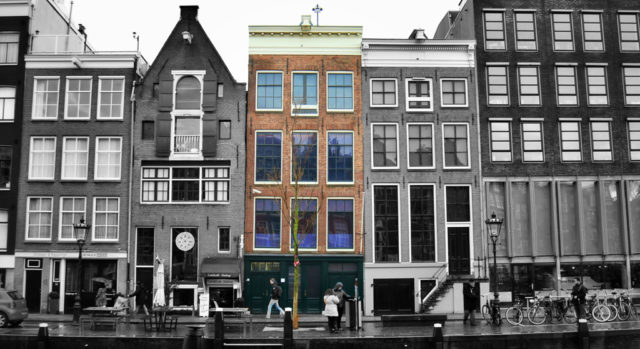
Anne Frank House
The Anne Frank House. This building owes its name to Annelies Marie (Anne) Frank, who became known for her diary. The Jewish girl from Germany wrote one of the most read books in the world with her diary. The Anne Frank House contains a secret annex, where Anne Frank went into hiding with her parents and sister from July 6, 1942 to August 4, 1944. Nowadays the house has been transformed into a museum where the story of Anne Frank and her history are told. The Anne Frank House can be visited daily from 9 AM to 10 PM.
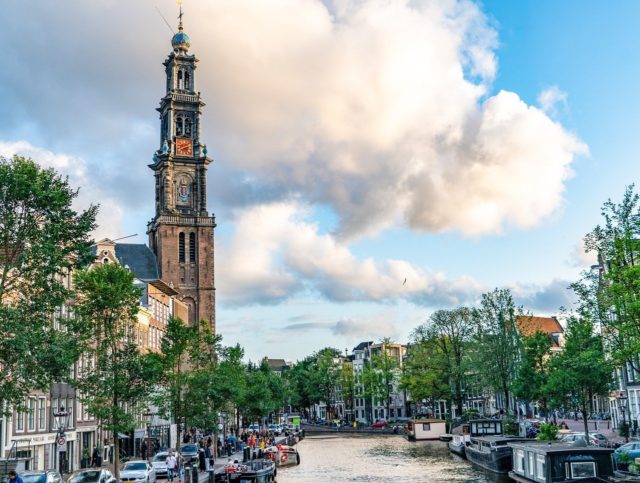
Westerkerk
As your last stop you will pass the Westerkerk. The Westerkerk was built between 1620 and 1631 in Renaissance style according to a design by master builder Hendrick de Keyser. The Westerkerk was completed under the leadership of his son, Pieter de Keyser, and put into use on June 8, 1631.
The church has a length of 58 meters and a width of 29 meters. The high central nave (nave) is flanked by the two lower side aisles. The three-aisled basilica has a rectangular plan with two transepts of equal dimensions. As a result, the floor plan took the shape of two connected Greek crosses.
After approximately 250 meters, turn right back onto the Lauriergracht and sail past the De Waterkant café back to our main location.
We hope you had a good time and that you will come and try one of our other sailing routes next time! Check them out below.

Berlage route
At the beginning of the 20th century, architect Hendrik Petrus Berlage designed a plan for the area south of the center of Amsterdam. Until then, this part of the city was still underdeveloped. Berlage used the Amsterdam School style for his design: stones with different colors, shapes and textures; rounded corners and undulating rooflines, and striking decorations on the exterior of the building. The Berlage route passes many of his buildings; rent a boat and see for yourself whether you can discover all the elements of Berlage’s style in Oud-Zuid.
Berlageroute Amsterdam
Canal route: 2 hours
Amsterdam is known for its many canals. The waters of the canal belt that demarcate the city center are the best known: the Singel, the Herengracht, the Keizersgracht and the Prinsengracht. On the shore you will find the architecture of the Golden Age: narrow, high buildings with stepped gables and traditional ornaments. Discover this beautiful piece of Amsterdam history while sailing one of the many canal routes. Since 2010, the Amsterdam canal belt has been on the World Heritage List thanks to the unique and irreplaceable character of the canals. You can easily rent a boat at Mokumboot.
Canal route: 2 hours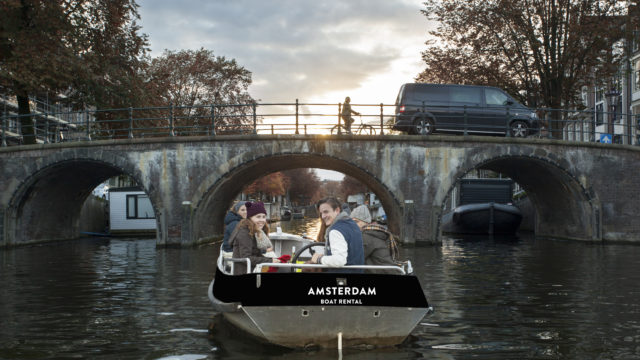
Canal route: 3 hours
Amsterdam is known for its many canals. The waters of the canal belt that demarcate the city center are the best known: the Singel, the Herengracht, the Keizersgracht and the Prinsengracht. On the shore you will find the architecture of the Golden Age: narrow, high buildings with stepped gables and traditional ornaments. Discover this beautiful piece of Amsterdam history while sailing one of the many canal routes. Since 2010, the Amsterdam canal belt has been on the World Heritage List thanks to the unique and irreplaceable character of the canals. You can easily rent a boat at Mokumboot.
Canal route 3 hours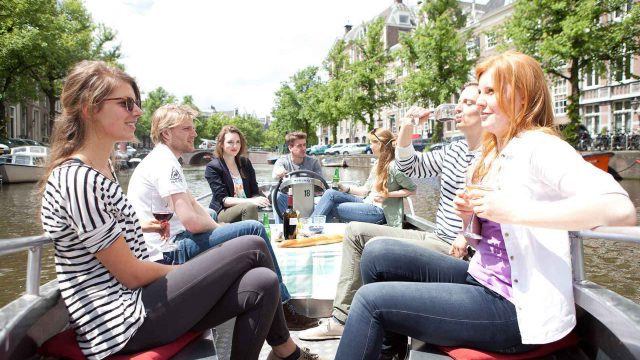
Plantage route
The Plantage route takes you along the greenest areas of Amsterdam. During this ‘city safari’ you will see that the city is greener than you thought, with the highlight being the botanical garden – Hortus Botanicus – with more than 6,000 tropical trees and plants. You can even spot exotic animals from your boat, such as elephants and giraffes. The sailing route runs past Artis, so you can catch a glimpse of the oldest zoo in the Netherlands. You will also sail past the interactive NEMO museum and the Tropenmuseum, with exhibitions about the Dutch slavery past.
Plantage route
Red Light District route
For most of us and every visitor, this is the most famous part of Amsterdam: the Red Light District. Discover Amsterdam’s Red Light District from the water with the Red Light District route. The streets are always busy with many tourists, but from a boat on the water you have plenty of space to view this old part of the city. In the Red Light District you can see prostitutes behind the windows 24 hours a day. The exciting and lively atmosphere in this Amsterdam district in combination with the rich history of this part of the city makes it definitely worth a visit. Along the way you will sail past the impressive Old Church (Oude Kerk in Dutch), a museum with contemporary art and you will come across various heritage buildings. Please note: sail clockwise on the Red Light District route. It is one-way traffic on the Oudezijds Voorburgwal.
Red Light District routeSail the 3-hour Canal Route yourself
Call Mokumboot directly for more information about renting a boat or book directly via our online reservation system. Mokumboot is open 7 days a week from 9:00 AM to 10:00 PM.
